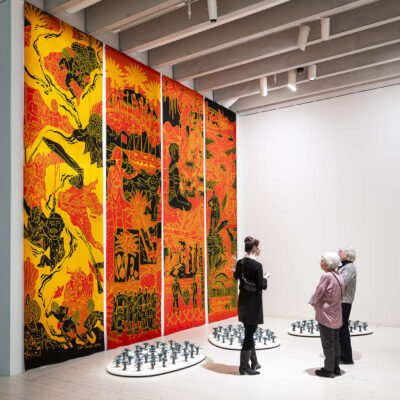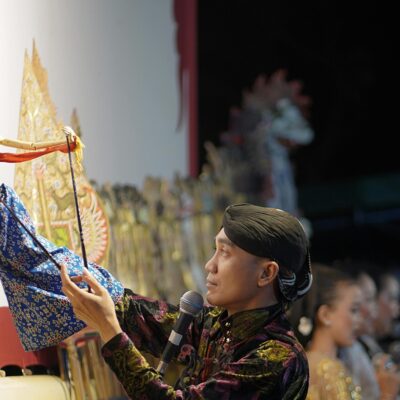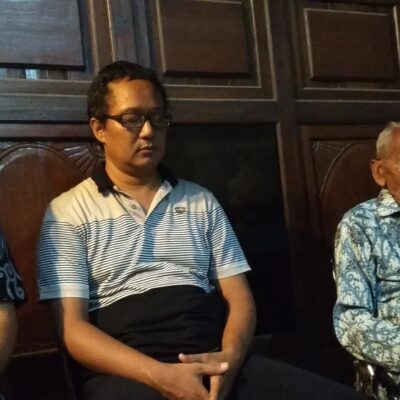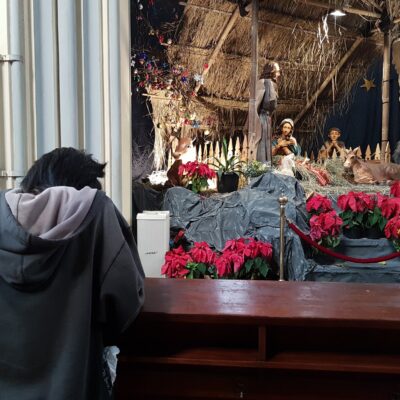‘Design’ is not universal, but a diverse set of situated practices that has opened new horizons for research across Asia and the Global South. We see design as a socio-material process of negotiating meaning, power, and futures with others, not simply a Western, solution-oriented practice aimed at producing efficient outcomes. Fresh approaches in design scholarship are surfacing to address urgent issues such as waste and pollution, energy crises, flooding, displacement, and food insecurity caused by climate breakdown. These approaches draw clearer links between creativity and participation and emphasise the role of citizens in designing the futures they need.
At the same time, these shifts in the field of design research bring tensions. Place-based researchers and those working in Area Studies have expressed frustration at how discussions of design in the Global South often slip into generalisations. The dominance of homogenising methodologies such as design thinking and human-centred design risk imposing universalist framings that can erase local specificities. Designers with good intentions, under pressure to deliver ‘solutions’ for external funding partners or agencies, sometimes leap ahead before fully grasping the lived complexity of local contexts.
Indonesian design
Professional design continues to evolve dynamically in Indonesia: new graduates enter the field, recognition grows, and the boundaries of what ‘counts’ as design widen.
Against this backdrop, this paper reflects on Indonesian design as a site of creativity, contestation, and possibility. Drawing on decades of networks built through designing, researching, and collaborating, we argue that Indonesian design offers powerful counterexamples to mainstream international development narratives. It shows what sustainable design could look like, what urban planning might prioritise, and how creativity might be put to use in ways that unsettle dominant ways of designing in an uncertain world.
The politics of ‘good’ and ‘bad’ design
Design in Indonesia, as elsewhere, is not inherently ‘good’ or ‘bad.’ The moral and aesthetic consequences of design depend on context, values, and power relations. For every inspiring example of design that improves lives, design also contributes to harm.
A new highway cut through a kampung may be well designed for efficiency of urban planning and may simultaneously damage community economies and local green infrastructure initiatives. All over cities and towns in Indonesia, single-use plastic packaging, designed for convenience, lines streets and clogs waterways. Tobacco companies, while lobbying against any regulation of their industry, recruit some of Indonesia’s most talented design graduates into high-paying roles crafting campaigns that target youth smokers The expansion of shopping malls and ‘modern’ retail environments, often designed as symbols of progress, displaces traditional markets (pasar) that have long served as centres of local economy and culture. In rural areas, such as at regency level, extractive industries employ design in the form of glossy promotional campaigns and model housing developments to frame resource exploitation as development, obscuring the ecological damage and dispossession experienced by local people. Even digital platforms, designed to expand connectivity and opportunity, can reproduce inequalities: app-based ride-hailing services, for instance, offer convenience for urban elites with strong internet connections but create precarious labour conditions for drivers.
These examples remind us that design is always implicated in political economies of power, profit, and consumption. Every design decision about form, function, materials, and distribution is entangled with broader systems of production and exchange. The creation of a new product, service, or infrastructure is never neutral but instead shaped by corporate interests, government policies, class dynamics, and consumer cultures. The result is that design can simultaneously enable innovation and empowerment while also reinforcing inequities, sustaining exploitative industries, and reproducing dominant ideologies about what constitutes progress or modernity.
To argue that design can ‘do good’ in Indonesia, therefore, requires grappling with its capacity to reinforce harm. The brief cases presented here are not idealised but are positioned as counterpoints—examples that demonstrate the possibilities of design to imagine otherwise—to open new pathways for sustainable and equitable futures.
Erasure and rediscovery in design histories
Design history, as it is typically taught and written, is a history of erasure. The global slogan ‘Made in China, Designed in California, Criticised in Europe‘ encapsulates the marginalisation of design practices outside Euro-American centres of critique and innovation. One of the authors of this article studied design in Australia in the early 2000s, and was taught the adage that ‘good design goes unnoticed.’ Rooted in modernist values, this phrase justified the invisibility of design. If design was visible—because it was awkward, repaired, or inefficient– it was implicitly ;from elsewhere.’ This assumption reflects a lingering colonial gaze in which the ‘elsewhere’ is often coded as peripheral or less advanced, implying that good, seamless design originates in the centres of innovation, frequently imagined as California or other Western hubs, while visible, imperfect design signals a failure to meet those imported standards.
The other author studied design at an Indonesian university a decade or so later, where modernism was still upheld as the aspirational benchmark of good design, yet constantly negotiated against local practices, materials, and cultural aesthetics that refused to disappear despite the dominance of imported theories. This framing relegated Indonesian design to the margins.
But place-based case studies disrupt such erasures by decolonising the meaning of design, innovation, and creativity. They foreground the specific cultural logics, material practices, and historical experiences of communities that have long been excluded from dominant narratives, thereby challenging the universalist claims of Euro-American design discourses. They reveal alternative genealogies of creativity that emerge from everyday repair, resourcefulness, and local knowledge systems, and insisting that design cannot be understood as a singular global phenomenon but as a plural set of practices deeply entangled with place, politics, and identity.
As an Indigenous design scholar, Elizabeth (Dori) Tunstall argues, hegemonic design discourses universalise values and processes, promoting the fiction of a shared design culture. Attending to Indonesian examples pushes against this hegemony, insisting on plurality and specificity.
Repair as design practice
Repair offers a compelling lens through which to rethink design. Repair in Indonesia is visible everywhere, in collective studios filled with jars of repurposed tools, in markets where stalls specialise in tool repair, and in the countless bengkel (workshops) that keep bicycles and motorbikes running. Homes themselves testify to repair cultures: rag-woven mats, patchwork bedspreads of worn batik, and ingenious handmade tools for tasks such as preparing coconuts. Repair also appears in performative forms: in Jakarta, artist Tita Salina collaborated with local fishers to collect plastic debris and assemble it into a floating ‘1001st Island’ in the archipelago.
Even the world heritage site at Borobudur is a site of repair and maintenance. Design played a crucial role in its repair, with experts carefully balancing structural stability while preserving the temple’s original form, materials, and symbolic meaning. The restoration involved detailed planning and prototyping to dismantle, clean, and reassemble the stones in a way that ensured both durability and cultural authenticity.
Borobudur is thus both metaphor and material example. It demonstrates how Indonesian design histories are hidden in plain sight, often obscured until reframed through lenses of repair and continuity.
Diplomacy through design
Design in Indonesia also plays roles in diplomacy and soft power. A striking example came in June 2022 when newly elected Australian Prime Minister Anthony Albanese visited Jakarta. Then Indonesian President Joko Widodo took him on a much-publicised bike ride on a bamboo-framed bicycle, designed by Singgih Kartono and produced by Spedagi in Central Java.
The bamboo frames themselves carry layered meanings. Constructed using joinery techniques inspired by traditional Javanese architecture, they embody both innovation and heritage. Bamboo is renewable and biodegradable but also socially coded in Indonesia as a material of modesty and ingenuity. It has long been associated with rural life and modest dwellings yet celebrated for its strength, renewability, and versatility, carrying class connotations that mark it as a material of the poor even as designers, architects, and communities continually reinterpret it through practices that range from everyday household tools and musical instruments to ambitious architectural experiments and internationally recognised sustainable products. Jokowi’s use of bamboo-framed bicycles was thus a diplomatic statement of humility, aligning himself with Albanese as leaders from modest backgrounds.
This symbolic dimension was almost entirely missed by the Australian media, which underscores how design mediates international relations, shaping messages not always understood across borders.
Participation and the politics of inclusion
Participatory design (PD) has become institutionalised within design theory. PD scholars argue it is a democratic design approach and philosophy that empowers citizens to take part in shaping designs and services, fostering mutual learning and collective decision-making.
We participated in the most recent PD Conference in Malaysia, an engagement that prompted reflection on design research experiences of working with Indigenous Dayak communities in East Kalimantan, Indonesia. In these places, health and wellbeing are not separate from daily life as they are lived, shared, and constantly negotiated. We saw how stories carry knowledge, how customary leaders lend authority to collective decisions, and how conversation itself can sustain care. We witnessed health challenges being addressed through the community’s own forms of ‘design’. In one village, for instance, elders and midwives co-created informal care networks to support expectant mothers, combining traditional birthing knowledge with limited access to formal health services. Such community-led initiatives were not framed as ‘design projects’ in the formal sense, yet they embodied principles of co-creation, iteration, and relational accountability, values that participatory design itself seeks to uphold and learn from.
To design differently means rethinking process from the ground up. It is not about inviting Indigenous participants into predefined methods, but allowing Indigenous ways of knowing and gathering to guide the process. This shift demands a redistribution of power, recognising customary authority as equal, and treating ceremony, dialogue, and accountability as central to imagining future health systems.
These reflections highlight that PD cannot simply be transplanted as a ready-made methodology but must instead be reoriented through local epistemologies, languages, and culture in order to genuinely embrace inclusion.
Another example of PD is spaces such as Peta Bencana (Disaster Map), an open platform that enables citizens to report floods through social media and messaging apps. These reports are automatically verified and displayed on a live map that local residents, emergency agencies, and NGOs use to coordinate responses. What begins as a simple act of reporting: a photo, a message, a map pin, becomes a shared infrastructure for collective decision-making. Peta Bencana shifts power by turning local knowledge into public data. Residents in flood-prone areas, often those most affected yet least heard, become central to how the city monitors and manages disasters. Instead of relying solely on official surveys or delayed reports, authorities respond to information generated by citizens themselves. In doing so, the platform reimagines civic design: transforming routine communication tools into instruments of participation, and everyday acts of reporting into a form of co-governance.
Inclusion extends beyond the formal involvement of people in design processes to encompass the deeper politics of knowledge production, where access is shaped by language hierarchies, the availability of translation, the affordability of publishing, and the structural conditions that determine whose voices are amplified, whose experiences are marginalised, and whose contributions are ultimately recognised as legitimate within both local and global design discourses.
Situated design futures
These short viewpoints on design in Indonesia, discussed through the lenses of repair, diplomacy and participation, challenge universalist accounts of design. They illustrate how local practices generate alternatives to dominant paradigms, whether through everyday repair, bamboo bicycles as tools of diplomacy, or community-based participation in arts and design.
At stake is not simply ‘adding’ Indonesian examples to global design histories. Rather, it is about reconfiguring what counts as design knowledge and whose voices shape its futures. By paying attention to Indonesian cases, we resist erasure, question homogenising methodologies, and cultivate design research that is plural, grounded, and accountable.
Indonesia, with its rich and contested design landscape, offers not just examples but provocations, inviting us to rethink what design is, what it can do, and for whom it matters.




